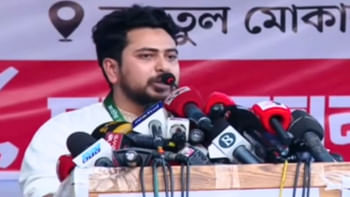What middle-income status means for Child Budget

According to a report, Bangladesh has recently achieved the benchmark qualifications of a middle-income country. The certification of this status will take several years, as the UN would want to be convinced first that the country is unlikely to slide back to its previous state. But the fact remains that in 2018, we have met the criteria.
The new status means that the country is now more capable of dealing with the issues it is faced with by its own. Along with greater capacities to invest, we would envisage a change in the distribution of resources. With so many competing demands at hand, one would need to be prudent and ensure balanced and justified investment in physical, institutional, human and social infrastructures.
However, at the least, the change in the status and strengthened capacity should mean that there is less ground to accept denial of human rights, particularly that of the children. And this needs to be reflected through the resources we spend for children, as portrayed in the national child budget. The UN Convention on the Rights of the Child (UNCRC) that we have ratified makes it a responsibility of the State to progressively realise child rights and asks for the best possible investment in children in meeting that responsibility.
So how, and to what end, will the impact of this graduation be on the next child budget? We can cluster our expectations in three broad areas:
We will not let a single child die from preventable causes in their vulnerable years (before five): Despite significant improvements in the recent decades, Bangladesh still faces high under-five mortality rate. At the national level, it is still likely that 46 of every 1,000 children will die before they reach their fifth birthday. This is higher in rural areas (56 in 1,000) and even higher among the poor (62 in 1,000 among the lowest wealth quintile). With rural and poor population being the worst victims, one strategic investment point could be the community clinics in which the government has already made significant investments. Unfortunately, while appointing medical professionals for those community clinics, we did not prioritise children enough by recruiting child specialists. Through the next child budget for 2018-19, we should invest in this area and ensure at least one visit a week by a child specialist in every community clinic, if not every day.
Thankfully, in the last two budgets, there has been a significant increase in health budget. Given the low base (still only around 5 percent of the budget is going to the health sector), this trend needs to improve further. One estimation of the General Economic Division suggests that we need to increase the health budget by 20 percent in the coming fiscal year to remain on track in terms of achieving the health-related SDGs.
We will ensure development opportunity for every child by ensuring quality education for all: While we can celebrate how we brought almost all children to education, two worrying facts remain: 5.5 million children in the country are still outside education, and we have not observed the education budget to improve much in the recent past. Inclusiveness, particularly for those with disabilities, and quality aspects of our education services have not been a matter of pride for the country. In the last budget, we saw a substantial slide in budget for education stipends at all levels. We would like to see a greater share of the budget going to education (UNESCO-suggested level is 20 percent), wider coverage of education stipends, and investment in disability-friendly education infrastructure in the budget for 2018-19. A widened mid-day meal project can be a great option to support the poor students to remain in school, besides its nutrition benefits.
We will not tolerate violence against our children anymore: We have seen increased incidences of violence against children in recent days. We are yet to effectively curb the incidences of child marriage. Physical and humiliating punishment prevails in schools, workplaces, institutions, as well as in our homes. Child labour, sexual violence, abuse and exploitation of children remains pervasive. Often, we tend to accept that children are to face some level of violence while it needs to be completely the opposite—the last one to face an act of violence is a child. In this case, our resources need to be channelled towards strengthening the child protection system. In achieving SDG 16.2, where we seek to end abuse, exploitation, trafficking and all forms of violence and torture against children, we need stronger institutions to implement stringent laws and deliver effective services, announcing our enhanced capacity to protect our children from all sorts of violence.
The more we advance towards the developing country status, the more we will see a shift in the development discourse away from resource availability to resource utilisation. Our children must be prioritised.
Md Ashiq Iqbal is Deputy Director, Governance and Public Finance, Child Rights Governance and Child Protection, Save the Children in Bangladesh.





Comments